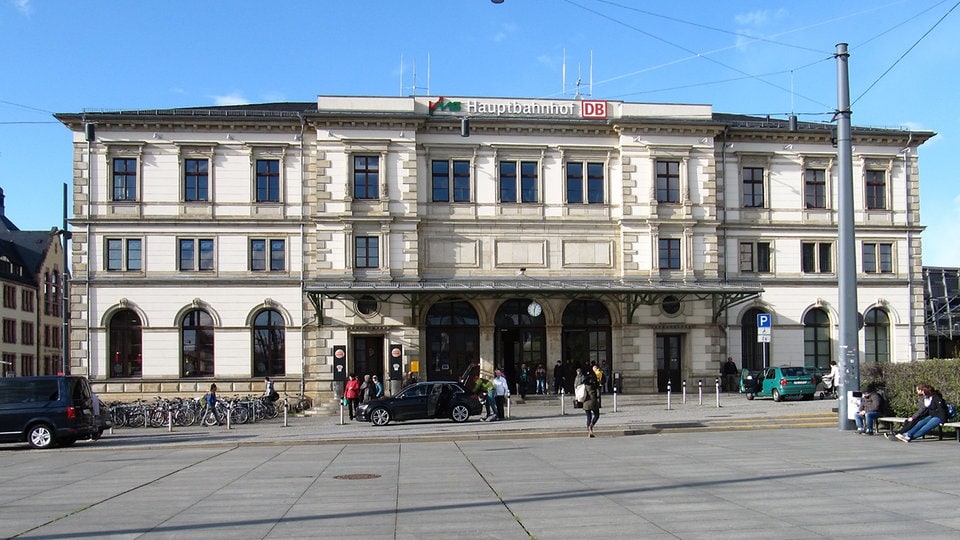Chemnitz is looking for quick connections to long-distance routes
As early as 1835 it had become clear to the people of Chemnitz what advantages a connection to Leipzig and Dresden would bring. In addition, an “Erzgebirge Railway” was planned to Zwickau, explains Kurt Kaiß. The former teacher and railway historian has worked intensively on expanding the Chemnitz route network and will soon be publishing a 264-page illustrated book about the Deutsche Reichsbahn between the 1950s and early 1980s.
–
The people of Chemnitz hoped that the connection to the Leipzig-Dresden route would provide easier access to raw materials and the removal of manufactured products. For the resource-hungry industrial city, it was important to have access to the coal fields near Zwickau.
–
Saxony refuses Chemnitz the long-distance railway connection
However, the Chemnitz-Riesa Railway Company, which was founded specifically, was not able to finance the construction of the railway, which was to be connected to the Leipzig-Dresden line in Riesa. But Saxony initially refused the urgently needed support. For the kingdom, the focus was on the connection to the emerging route networks of neighboring countries, Kaiß continued. In 1840, Leipzig was connected to Halle and Magdeburg in Prussia and in 1848 to Hof and thus the Bavarian railway network.
–
Only a bankruptcy advances the Chemnitz plans
In 1845, the construction of the connection to Chemnitz began from Riesa, although the exact route was not yet certain. The first section was opened in 1847, but the many engineering structures on the difficult section between Limmritz and Waldheim drove the private railway company to ruin. Now the state had to step in and take over the company in 1850 to finish building the line. For the opening on September 1, 1852, none other than the Saxon King Friedrich August II, with his family and ministers, allowed himself to be driven from Riesa to Leipzig. The city of Chemnitz was connected to the rail network and the king was immediately urged to expand the line to Zwickau.
–
Chemnitz is connected to Prague and Vienna
While people in Dresden and Leipzig mockingly asked what Chemnitz was doing with the connection, “where the Erzgebirge factory population has no reason for business trips and no money for pleasure trips”, the expansion of the Chemnitz route network was now progressing steadily, explains book author Kaiß: 1858 The connection was made from Zwickau and via Gößnitz directly to the Saxon-Bavarian railway network. In 1866 Annaberg followed via Flöha, in 1869 the direct connection to Dresden via Freiberg and in 1872 the direct connection to Leipzig via Narsdorf. In the same year, the Annaberg route to Weipert (Vejprty) was extended and, in coordination with Austria, connected to Komotau (Chomutov) in Bohemia. This shortened the Leipzig-Prague-Vienna line by 45 kilometers.
–
Internationally it continued until the Second World War
Chemnitz main station is steadily gaining in importance, so that in the 1920s it was even more occupied than Leipzig main station.
–
A look at the summer course book from 1939 shows that over 70 destinations could be reached from Chemnitz – without changing. 14 long-distance railway lines had a stop in the industrial city and brought their passengers directly to Breslau, Salzburg and Saarbrücken. The route via Chemnitz was particularly important for the east-west connection across what was then the German Empire.
–
The network is shrinking under Soviet occupation
After the war, the reconstruction of the destroyed tracks proved difficult because the Soviet Union demanded enormous reparations payments. Now a trend began that has continued almost uninterrupted to this day: the Saxon route network shrank for the first time. Nevertheless, in 1980 the Saxon railway network was still the second densest in Europe.
–
On all double-track lines with the exception of the Frankfurt (Oder) -Berlin-Halle / Leipzig-Erfurt connection, one track was dismantled from 1945 onwards. This dismantling also affected parts of the Chemnitz-Leipzig route and the entire connection to Dresden. The important route to the state capital received its second track back in parts from 1950.
–
In the GDR everything is geared towards Berlin
With the division of Germany, the east-west axis Görlitz-Dresden-Chemnitz-Plauen quickly lost its role as one of the most important railway lines in Germany. In the GDR, the focus was on Berlin, from where so-called main roads led to the neighboring countries of the GDR in a star shape. Chemnitz thus lost its prominent position in the long-distance network.
–
From 1960, a city express network was set up in the GDR, which was also geared towards Berlin. Fewer intermediate stops led to shorter travel times compared to the D-trains from Karl-Marx-Stadt, which were previously common in long-distance traffic. From 1976 the city express service was supplemented by a city express. The attractive orange-ivory-colored trains represented the highest quality express connection in the GDR until 1991 and ran from Zwickau via Karl-Marx-Stadt. For a surcharge, you could now be driven directly to Berlin in luxury cars and with priority over freight traffic. From 1984 the city express “Fichtelberg” started in Chemnitz, the “Sachsenring” from Zwickau drove via Leipzig. At times there was a night train with a stop in Leipzig to Rostock, which was particularly popular with holidaymakers and school excursions.
–
– .


:quality(80)/cdn-kiosk-api.telegraaf.nl/46664e92-bd40-11eb-850e-02d1dbdc35d1.jpg)